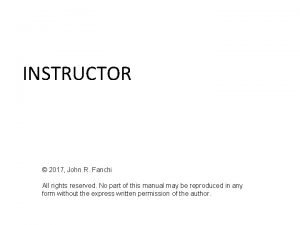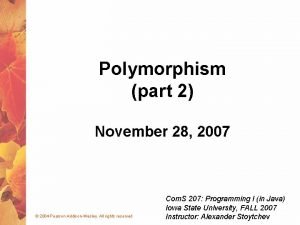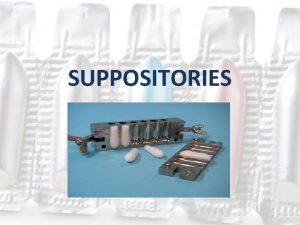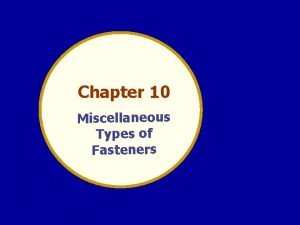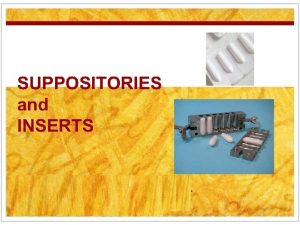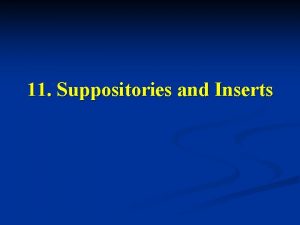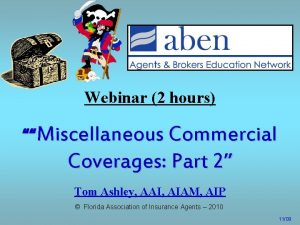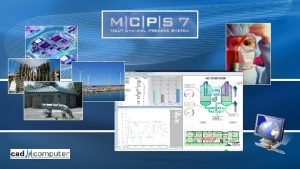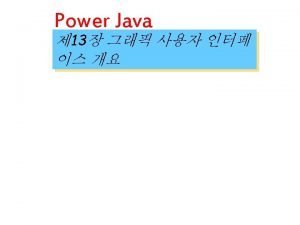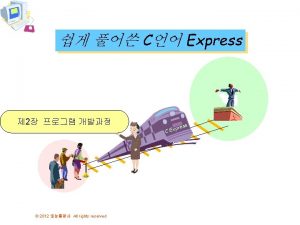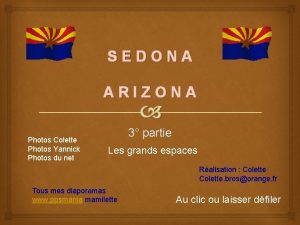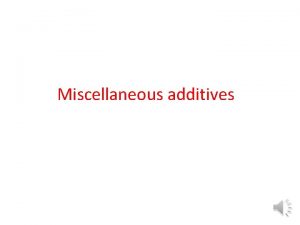MISCELLANEOUS 2006 all rights reserved photos have digital


















































- Slides: 50

MISCELLANEOUS

2006 all rights reserved photos have digital signatures do not reproduce without permission Reginald W. Neale 6032 C. R. 41 Farmington NY 14425 rneale@rochester. rr. com v 5. 1 December 2010 51 slides including titles/notes/appendices

The Curse of the Collector A few items from my collection… Accumulated over a long career in electronics, during which I have proved tragically unable to discard anything elegant, exotic, wonderful, curious, weird or of exceptional quality, no matter how remote the chance that I might put it to some future useful purpose. This publication is dedicated to those of you who are similarly afflicted.

• One element of a modular high-voltage power line insulator system. This is called a cap and pin insulator. On a typical high-voltage transmission line, each conductor is suspended from a stack of these, with the number depending on the voltage to be insulated. This one is a foot in diameter; six inches deep. Weighs about 20 pounds, The surface that’s visible in this photo is actually the bottom. Heavy, expensive ceramic has largely been replaced by cheaper, lighter plastics and composites.

Morse’s Telegraph • This is a copy of a page from an antique book “Comstock’s Philosophy, ” It’s analogous to a modern physics textbook. At the time it was published in 1854, the telegraph was about ten years old, having been publicly demonstrated in 1844. • The book belonged to my greatgrandfather, Amos Wells. He lived in the hamlet of Hall Center, between Marion and Walworth in Upstate New York’s Wayne County.

Telegraph Key • Telegraph keys were used to tap out messages in Morse Code. This one is a military J 38 key. Lionel, of model train fame, manufactured some of these. photo courtesy of W. R. Rust

Early electrical projects From 1913. Exposed wiring plugged right into the wall outlet, lots of asbestos. Hey, no problem. Try to imagine the disclaimer you’d need to publish with this kind of project in today’s environment full of TV attack lawyers.

• Mid 20 th century frequency standard in its own little porcelain temperature control oven.

• It looks like a vacuum tube, but it’s not. It’s a quartz crystal element, mounted in a tube envelope. This was used to lock an oscillator to a precise frequency.

Radiotelephone crystal • Way before cell phones, industries and emergency services used radiotelephones with closely-spaced dedicated VHF frequencies. • Plug-in crystals like this changed the channels.

Model “T” Ford ignition coil • There were four of these coils, one for each spark plug • The vibrating contacts established an alternating current in the primary coil. A secondary winding stepped the voltage up to several kilovolts

Vintage spark plug • Modular construction. Sloppy assembly could really mess up your cylinder compression.

Homopolar motors span three centuries. The on the left, from BOY MECHANIC of 1912, was adapted from the very first electric motor to be demonstrated: Barlow’s Wheel of 1822. A brass disc is positioned between the poles of a magnet. Its rim is immersed in a trough of mercury that completes the circuit of radial current flow through the disc. Although the other one looks very different, they both use the Lorentz Force to produce rotary motion from a unidirectional magnetic field. The on the right is definitely a minimalist design: four parts, fifteen seconds, 10, 000 RPM!

• Pioneer integrated circuit designer and legendary wild man Bob Widlar did some consulting for Teledyne while he was at National Semiconductor. This is a promotional piece that Teledyne circulated to the trade.

Infrared Detector Card General Electric gave these away as a promotional item in the 1960’s.

Vacuum thermocouple • • A signal is fed in on the two black leads. The power level is measured by thermocouple output on red and blue leads. Since thermal effect is insensitive to waveform, this technique was used to measure DC equivalent and RMS values of radio frequencies or complex waveforms. Output is in millivolt range, is slow and is not well isolated from input.

Navigation then… In the 1960 s I experimented with celestial navigation, using an aircraft sextant and almanac tables like those shown, but located on the ground and stationary. This required an accurate time signal from a shortwave radio, and a working copy of a map for plotting the calculated position. I was happy if that position was within a few miles of my actual known location.

. . and now 2008 GPS unit builds in all the timing, calculating, and reference resources for using artificial satellite signals to display your position in real time to within a few feet.

1920’s on-off switch • Your basic over-center toggle mechanism, with brass contacts and white porcelain base.

Lamp dimmer, 1920’s style. Rotating the outer ring inserts a variable amount of resistance wire in series with whatever is plugged into the top receptacle. UL approved - NOT! Electrical accessories available to the consumer during this era varied from merely hazardous to potentially suicidal (pun intended).

Auto radio vibrator This is called a vibrator. Really. Until the 60’s, there was one of these in every vacuum tube auto radio. Its vibrating contacts chopped the car battery’s DC into AC, which was stepped up by a transformer to supply the higher voltages needed for the tubes.

WWII throat microphone • With original instructions cautioning not to let it fall into enemy hands. • Olive-drab harness fastened it around the neck. A disc-shaped sensor on each side of the speaker’s adam’s apple picked up vibrations from the larynx, while minimizing ambient and battle noise. • This was worn by military personnel in fighters, bombers and tanks.

Early Vacuum Tube Hearing Aid Way before hearing aids were “in your ear. ” Even with subminiature vacuum tubes, these were clunky pieces of hardware. This is only the amplifier part of an early hearing aid, minus the earpiece, battery pack and connecting cables.

Before & After Transistors The SONOTONE 1111 was one of the first transistor hearing aids. It’s shown complete with battery and bone-conduction earpiece. The BELTONE vacuum tube model on left is shown without the large battery pack and earphone.

• Sonotone 1111 hearing aid in original case, with earpiece and spare battery. courtesy of W. R. Rust

• Inside views of one of the last vacuum-tube hearing aids produced. The reduced size and power requirements of transistors soon led to their domination of the market.

Pre-digital Reverb • Adding a reverberation effect to musical instruments was accomplished by sending the signal down a long spiral path (two springs) and recapturing the delayed signal at the other end. This device was made by Gibbs Mfg. & Research, a division of Hammond Organ.

Vintage Microphones from the Golden Age of Radio • These ribbon microphones used sophisticated mechanical and electrical design to achieve wide audio bandwidth and low hum pickup. RCA type 44 on the left, type 77 on the right. Photos courtesy of W. R. Rust

Inside the RCA Type 77 Ribbon Microphone Photo courtesy of W. R. Rust

The Magnetic Amplifier • 1959 brochure for the magnetic amplifier. A technology that didn’t quite make it to the big time. Extremely rugged and efficient. Smaller and more efficient than tubes but still big and heavy compared to transistors. Germans used it in V-2 rockets.

Databases before personal computers • In 1976, giant corporations could afford a mainframe computer, with the automatic card punches, sorters, printers and other expensive infrastructure. If you were a small business, your options were necessarily more modest. Visicalc - the first spreadsheet - hadn’t even been invented yet. This stack of cards was an ingenious manual data storage and sorting system. . Information is encoded by notching out “fields” along the perimeter of the card with the special hand punch shown. Sort on a field by running a knitting needle through the card stack and letting the notched cards for that field drop out. Each field digitally represents data handwritten or typed in the main body of the card.

• Integration, 1950’s style. This hybrid element from a TV set combines a compression variable capacitor with a fixed inductance to form an adjustable parallel resonant circuit for setting the center frequency of the horizontal hold circuit. The coil is encapsulated in a blob of wax sealing compound.

• The Texas Instruments SR-50, my first scientific calculator. Ten significant figures, plus a two-place exponent. For many years, my benchmark for calculating performance was to punch in 69 factorial. Early scientific calculators took several seconds to display the result. Today, the calculator accessory in my PDA does it almost instantaneously to fourteen significant figures.

• • Slide Rules A slide rule is basically an analog computer. It’s a way of mechanically manipulating logarithms by representing them as distances. They can be added/subtracted by moving the slide and cursor. Accuracy depends on the kind of calculation, the type of slide rule, and the skill of the user. Typically good for a couple of significant figures, and you have to mentally keep track of the decimal point and the sign. The big names were Keuffel & Esser, Pickett, and Dietzgen.

• “Now me - I prefer analog computers, ” he confided with a sly drool. OK, it’s an atrocious pun, and I apologize to R. Crumb for taking liberties with a panel from his classic “Stoned Agin”

• When a rough slide-rule calculation wasn’t good enough, engineers did it the hard way, using tables of logarithms.

Log Tables • Page from a table of logarithms. This is the way it was done before calculators. Common logarithms are base 10; natural logartithms are base “e”. Add logarithms to multiply numbers, multiply them by an exponent to raise to a power. Then interpolate between the values in the tables to convert the logarithmic answer back into a real number. Most reference books included log tables with five decimal places. Accuracy of the result varies with the size of the number. Three or four significant figures is typical. At least pencil and paper never crashes…

Edison Cylinder Audio Recording • 160 RPM, 4 minutes duration. Production of cylinders was discontinued in 1929. (Loaned by W. R. Rust)

Magnetic Wire Audio Recording • Magnetic wire recorders were a popular consumer item in the 1940’s. Replaced by magnetic tape, which was much easier to splice and edit. Stainless steel wire about 3 mils in diameter ran at 24 inches/second. Information density about 100 bits/foot.

Audio Magnetic Tapes • Audio magnetic tapes. Pictured are several sizes of reel-to-reel 1/4” tape, an 8 -track cassette from the 1970’s, a “standard” audio cassette, and a miniature cassette for telephone answering machines. (Loaned by W. R. Rust)

• Consumer media for what were called “record players. ” Clockwise from left: thick Edison disc - 78 rpm/4 minutes; LP - 331/3 rpm/15 -17 minutes; red 45 rpm/3 minutes; “Sound sheet” - 331/3 rpm, typically bound into a printed publication; cardboard discs, 331/3 rpm, promotional items. All except the last are double-sided. (Loaned by W. R. Rust)

• An album of 78’s. Typically, consumers owned a “record player, ” which combined the turntable and stylus arm with a complex mechanism that permitted stacking several discs for sequential play. The stack had to be manually inverted to play the reverse sides. (Loaned by W. R. Rust)

• Professional recording media from the mid 20 th century. Blue label was lowest quality; Yellow label was highest, with a lacquer coating on a glass base. This kind of media, in which the sound-wave information is engraved into a solid material, had many variations. Modulation could be vertical or lateral, monaural or stereo. The spiral track could be inside to outside or vice versa. Recovery of information via a stylus riding in an engraved track is an inherently life-limiting technology. (Loaned by W. R. Rust)

• The Sony Mini-Disc was big in Japan, not so much in USA. Basically an external HD like the Zip disc. Popular for audio files until it was overtaken by cheap flash memory. Totally unrelated to the superficially similar Pocket CD, which is a little larger, has no protective cover, and is optically instead of magnetically encoded. (Loaned by W. R. Rust)

Comparison by Paul Horowitz of MIT. To be fair, the 1954 unit includes power supply and display. But still, Moore’s Law has powered a mind-boggling evolution. T. J. Rodgers of Cypress Semiconductor pointed out in a recent interview that if automobile technology had followed that same trajectory, today you would be able to buy a Chevy for a penny, and it would get 10, 000 miles per gallon. Sounds like hyperbole? In 1948, ENIAC cost $500 K and performed 0. 002 MIPS. The current Digi-Key catalog lists embedded controllers for $0. 50 that perform 2 MIPS. Apply those same factors to the 1948 Chevy at $2 K and 15 mpg and Rodgers’ claim doesn’t look so preposterous.

Big Magnetic Platter • Dennis O’Leary says this is probably from a DEC RK 05 storage unit. Double sided removable disk had a capacity of 2. 4 MB! His PDP-11 lab system had two of these drives, plus a 7 -track mag tape drive, an A/D conversion and other peripherals. That whole system cost $64, 000 in 1975.

Big Optical Platter • Maxell OC 301 -2. Not quite a foot in diameter. Double-sided, 2. 62 Gb capacity. Keychain flash memory storage units now exceed this capacity.

NOTES: Your feedback on this presentation is welcome. Are there items you especially liked, or ones that you think should be eliminated? Do you know of candidates for inclusion? The Virtual Museum is always changing. Send comments, suggestions and criticisms to me at rneale@rochester. rr. com

Appendix A If you enjoyed this presentation, you may also be interested in some of these sites: http: //www. conradhoffman. com http: //www. oneillselectronicmuseum. com/page 10 g. html http: //www. electricstuff. co. uk/ http: //www. tubecollector. org/list. php? L=: http: //otherpower. com/otherpower_experiments. html http: //www. unusualmuseums. org/ http: //wps. com/archives/tube-datasheets/ http: //members. misty. com/don/samflash. html http: //www. ieee-virtual-museum. org/ http: //www. seas. upenn. edu/~museum/ http: //frank. yueksel. org/tubes/sheets. P. html http: //www. heathkit-museum. com/ http: //semiconductormuseum. com/Museum_Index. htm http: //silicongenesis. stanford. edu Zillions of relevant sites, and of course they’re always changing. Warning: these are incredible time sinks. But you already knew that.

Appendix B • Some books which relate to the technology described in this presentation • • 70 Years of Radio Tubes, John W. Stokes, Vestal Press 1982 Procedures in Experimental Physics, J. Strong, Prentice-Hall 1938 The Amateur Scientist, C. L. Stong, Simon & Schuster 1960 Reference Data for Radio Engineers, Federal Telephone and Radio Corp. 1946
 All rights reserved example
All rights reserved example Copyright 2015 all rights reserved
Copyright 2015 all rights reserved All rights reserved sentence
All rights reserved sentence Creative commons vs all rights reserved
Creative commons vs all rights reserved Confidential all rights reserved
Confidential all rights reserved Sentinel controlled repetition
Sentinel controlled repetition Copyright © 2015 all rights reserved
Copyright © 2015 all rights reserved 2012 pearson education inc
2012 pearson education inc Microsoft corporation. all rights reserved.
Microsoft corporation. all rights reserved. Microsoft corporation. all rights reserved.
Microsoft corporation. all rights reserved. Microsoft corporation. all rights reserved.
Microsoft corporation. all rights reserved. Pearson education inc. all rights reserved
Pearson education inc. all rights reserved Dell all rights reserved copyright 2009
Dell all rights reserved copyright 2009 Warning all rights reserved
Warning all rights reserved Siprop
Siprop Quadratic equation cengage
Quadratic equation cengage Warning all rights reserved
Warning all rights reserved Confidential all rights reserved
Confidential all rights reserved Microsoft corporation. all rights reserved
Microsoft corporation. all rights reserved Pearson education inc. all rights reserved
Pearson education inc. all rights reserved Copyright © 2018 all rights reserved
Copyright © 2018 all rights reserved 2017 all rights reserved
2017 all rights reserved Copyright 2010 pearson education inc
Copyright 2010 pearson education inc Pearson education inc. all rights reserved
Pearson education inc. all rights reserved Confidential all rights reserved
Confidential all rights reserved Airbus deutschland gmbh
Airbus deutschland gmbh R rights reserved
R rights reserved Rights reserved
Rights reserved Sql sailors tables
Sql sailors tables Freedigitalphotos.net / vectorolie
Freedigitalphotos.net / vectorolie Positive rights vs negative rights
Positive rights vs negative rights Littoral and riparian rights
Littoral and riparian rights Duty towards self
Duty towards self Legal rights and moral rights
Legal rights and moral rights Negative right
Negative right Negative right
Negative right Negative right
Negative right Negative right
Negative right Name all the lines name all the segments name all the rays
Name all the lines name all the segments name all the rays Digital image 2006
Digital image 2006 6 flat faces 12 edges 8 vertices
6 flat faces 12 edges 8 vertices Suppository semi solid
Suppository semi solid Miscellaneous detail
Miscellaneous detail Fasteners locking devices
Fasteners locking devices Carpentry tools and equipment
Carpentry tools and equipment Miscellaneous operators in javascript
Miscellaneous operators in javascript Miscellaneous base for suppositories
Miscellaneous base for suppositories Anthony marston quotes
Anthony marston quotes Electronic cookware miscellaneous
Electronic cookware miscellaneous Nanoxynol
Nanoxynol Miscellaneous commercial insurance
Miscellaneous commercial insurance


























